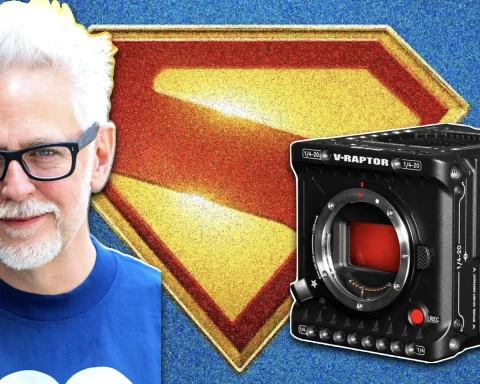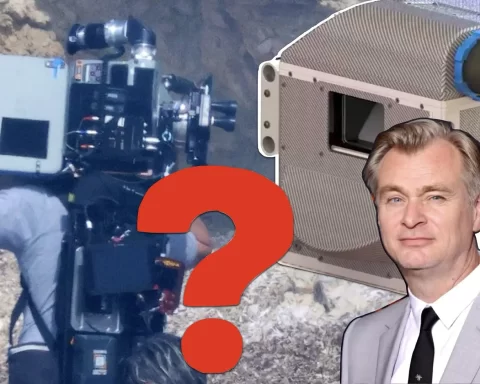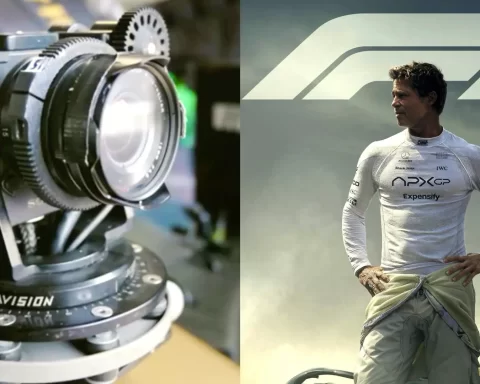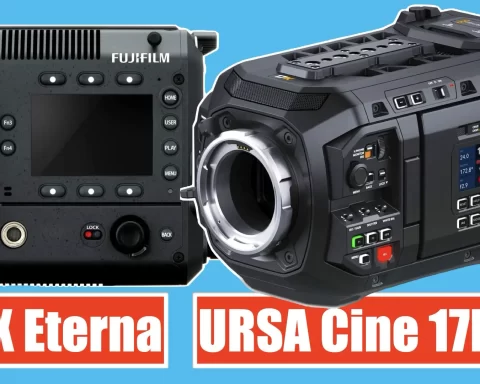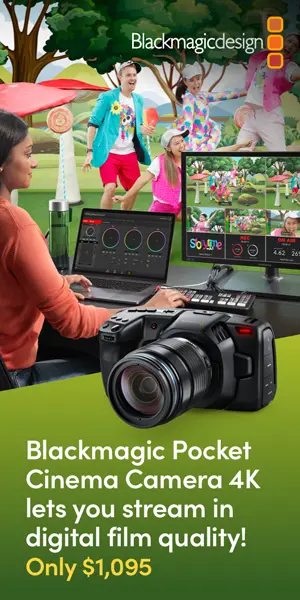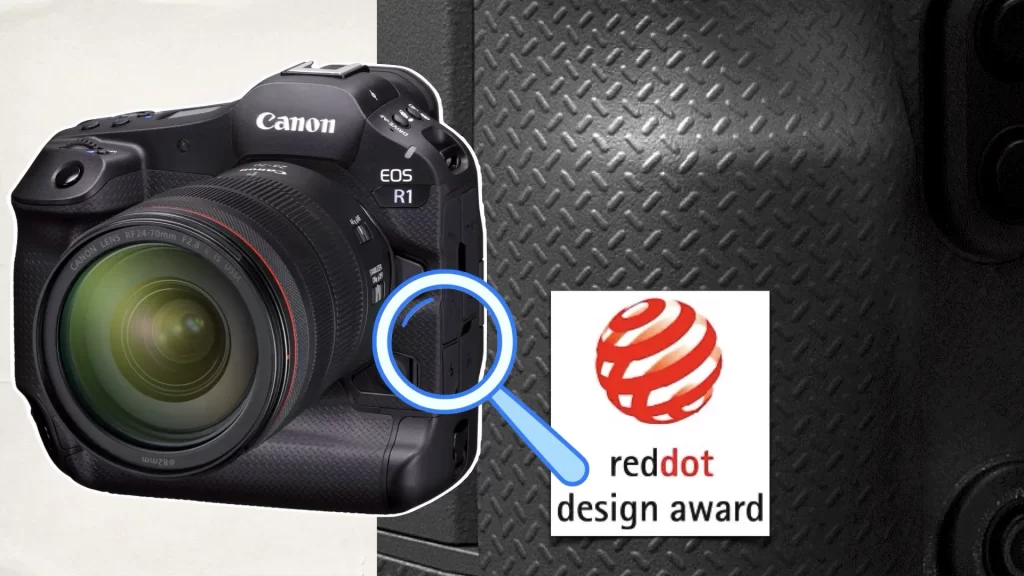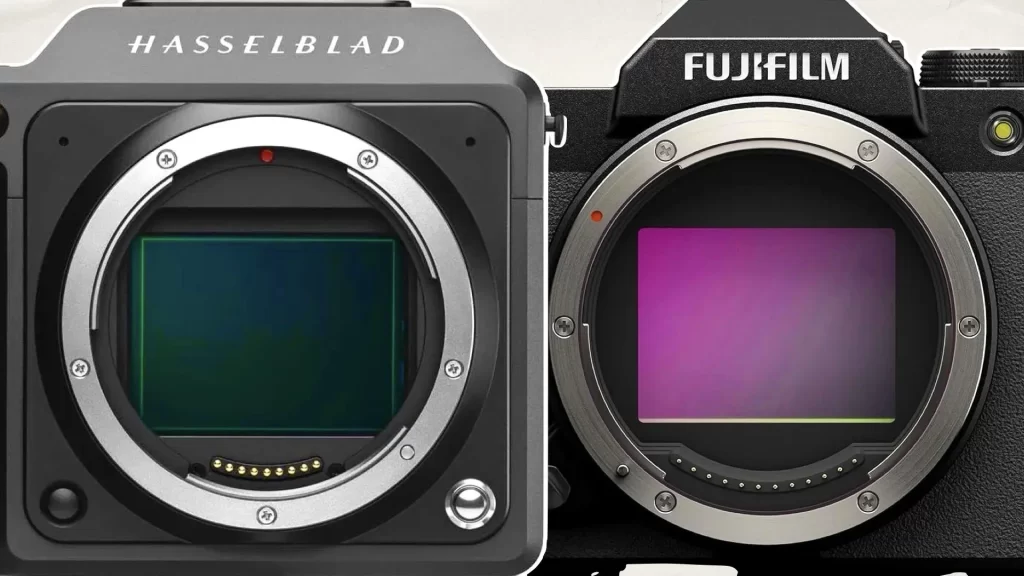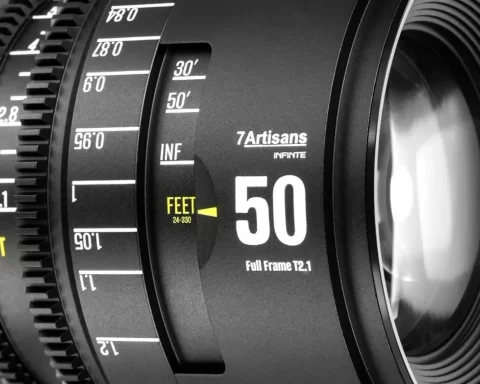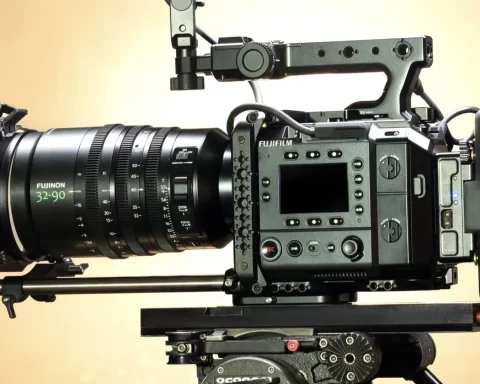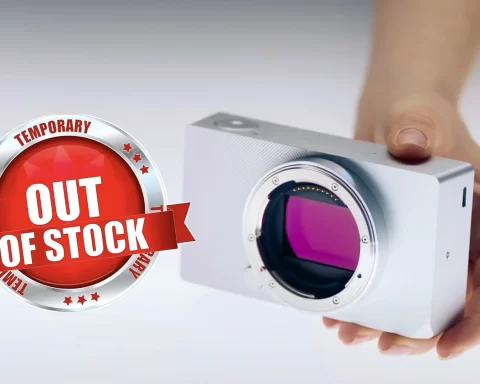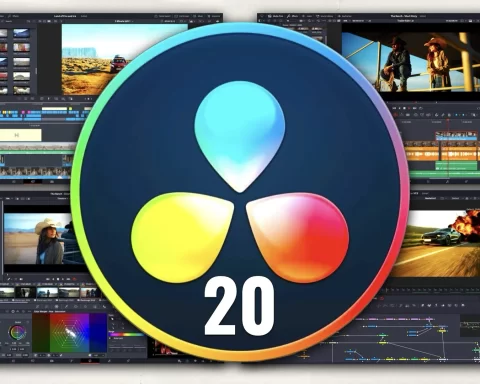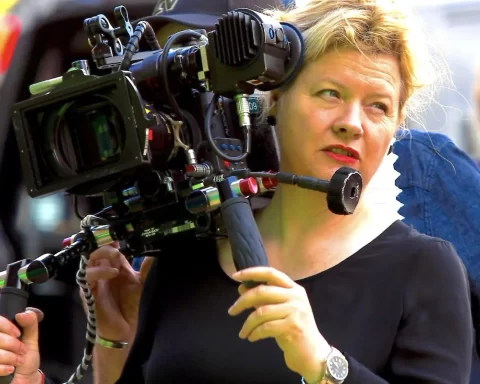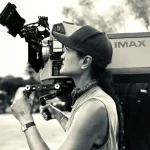As digital continues to define much of contemporary filmmaking, a quieter development is taking shape in the analog world. Losito, known for its commitment to film-based imaging, has unveiled a set of high-speed motion picture cameras that revisit the possibilities of slow-motion capture on 65mm, 35mm, and 16mm film. The headline camera, Kairos 360, is a new entry in the rare category of large-format high-speed systems. Alongside it, two Photo-Sonics models — including a newly configured 35mm 4BR and a 16mm Ultramax — round out a small but focused lineup. Here’s a closer look at what these cameras are, and why they matter.
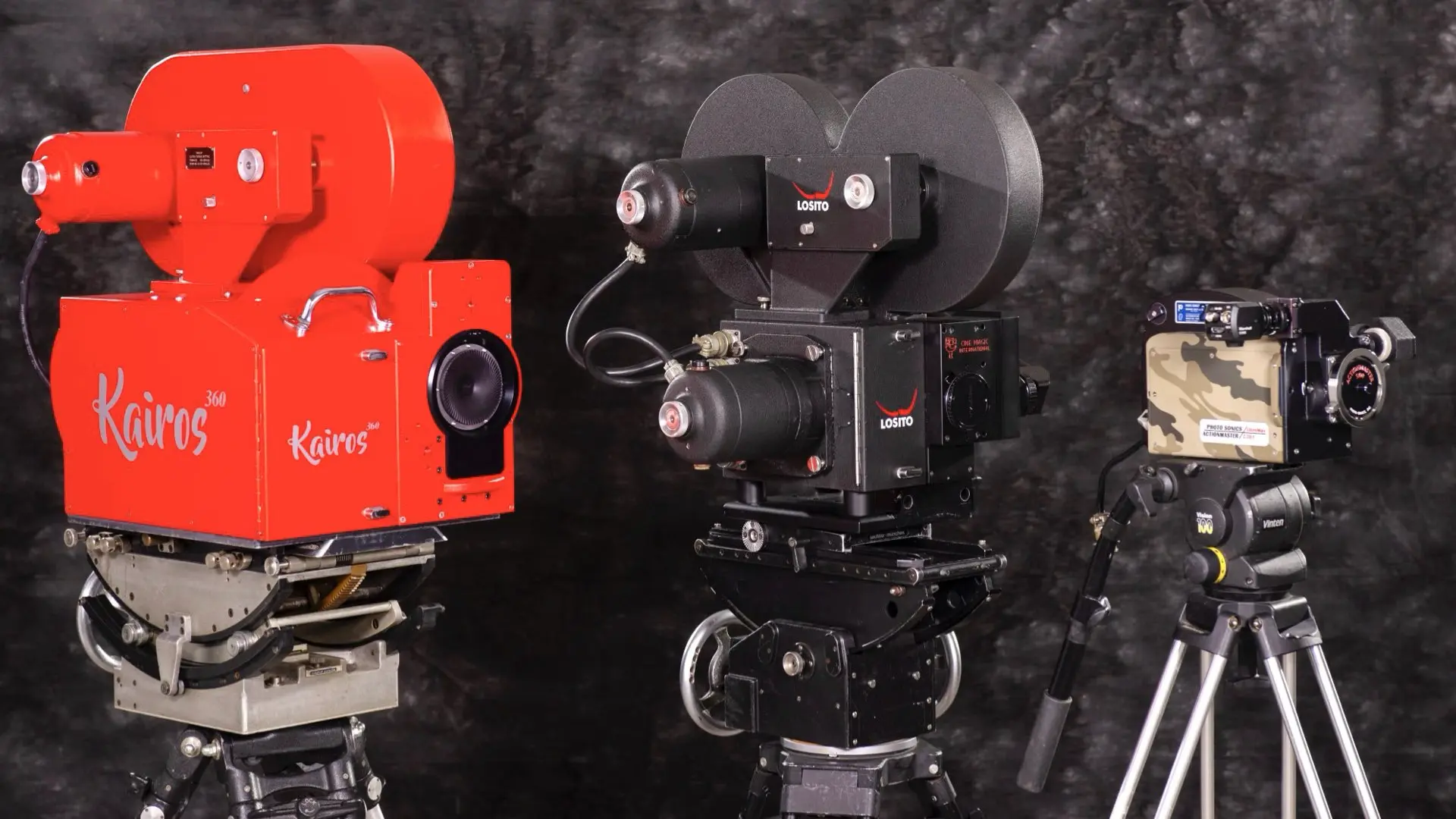
A Purpose-Built Analog System for High-Speed Capture
There’s a reason we don’t see slow-motion 65mm film footage very often: it’s expensive, heavy, mechanically complex, and requires precise handling. Most directors working with film today tend to choose it for its texture, not for extreme frame rates. So when a company like Losito develops a system like Kairos 360, it’s not about nostalgia — it’s a response to a specific need. There are filmmakers, especially in the large-format space (including IMAX), who want to combine the look of analog with the ability to stretch time. And digital cameras — while powerful — don’t always deliver the depth and visual qualities that film can provide, especially in medium and large formats.
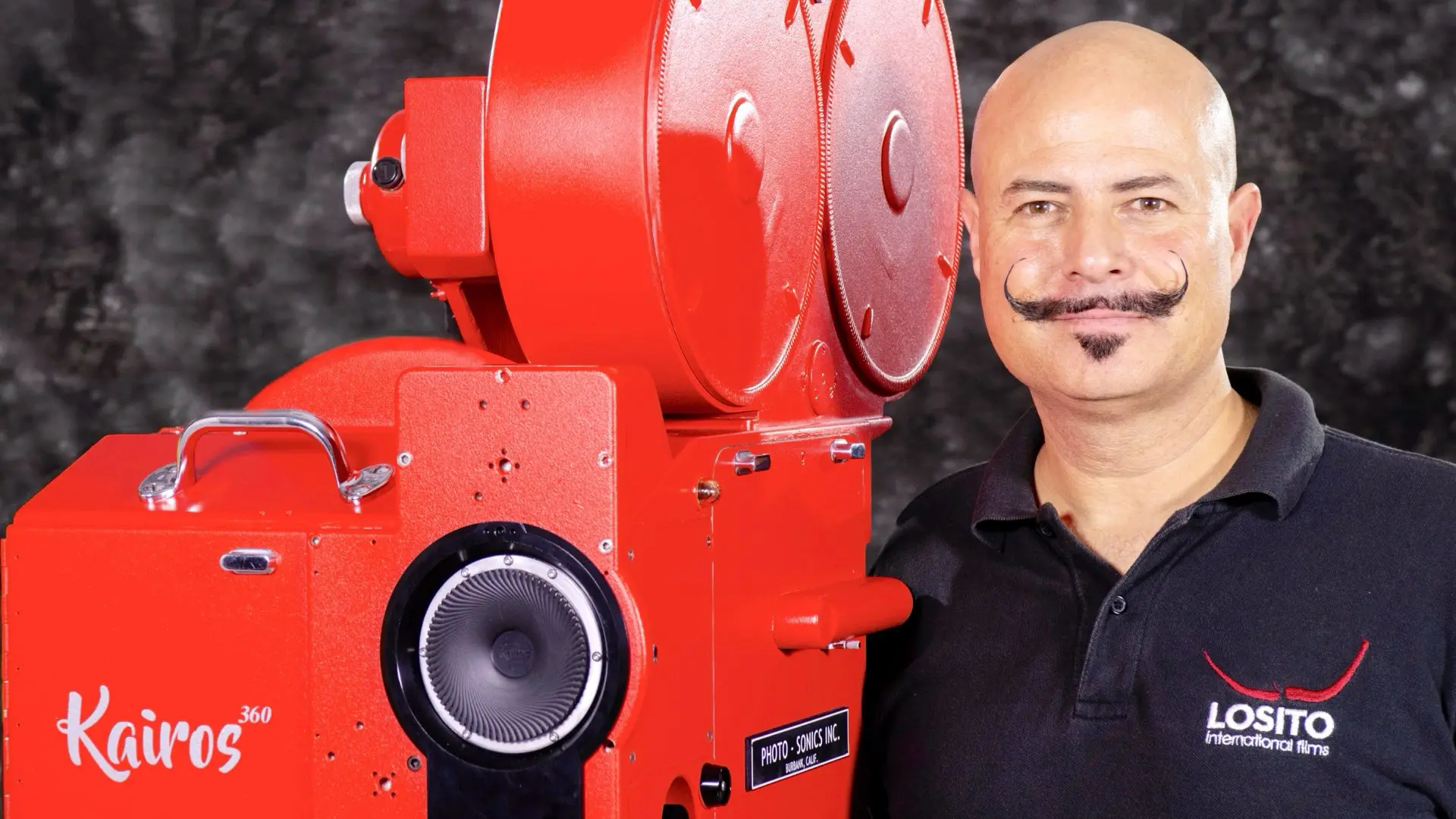
The Kairos 360: A 65mm High-Speed Film Camera
Kairos 360 is the centerpiece of the announcement. It’s a 65mm motion picture camera capable of running at 90, 180, and 360 frames per second. Built around a rotary prism movement with continuous film transport, the camera uses standard 65mm film stock and exposes a frame size of 52.5 x 56mm — significantly larger than standard 35mm, and close to full IMAX. From a technical perspective, the camera requires substantial power: 208VAC, 3-phase, 60Hz, with surge requirements of 90 amps per phase, settling down to 40 amps while running. This means Kairos is intended for studio or set-based productions with serious infrastructure — not mobile or guerrilla-style shooting. The lens mount is a proprietary system, and the shutter is fixed at 30°, which provides crisp, motion-stable imagery but requires careful lighting. The viewfinding system is built on a Photo-Sonics optical design, usable only when the film is not running, with a second parallax viewfinder and a Full HD video assist for live monitoring. Film magazines hold up to 1,000 feet (about 300 meters), and the whole camera system weighs in at 80 kg (176 lbs), so this is a camera that needs to be rigged and planned for carefully. YMCinema was the first to report on it here.
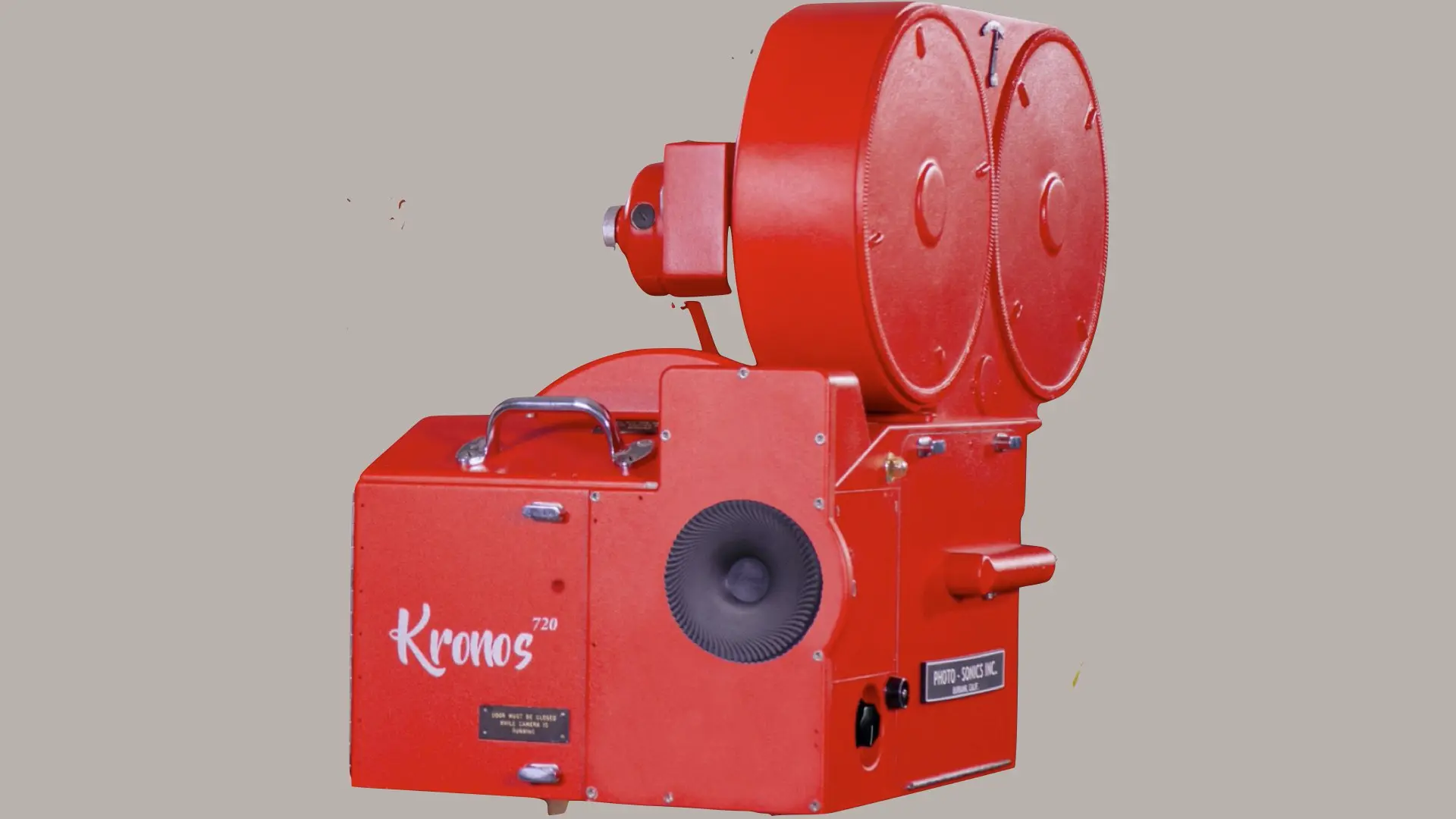
Supporting Cast: Photo-Sonics 4BR and Ultramax
Alongside Kairos, Losito is offering two additional options for high-speed film capture:
Photo-Sonics 4BR — 35mm Flexibility
Originally built for scientific and defense applications, the Photo-Sonics 4BR has been adapted here for cinematographic use. It runs 35mm film at speeds ranging from 80 to 2,080 fps — making it one of the fastest film cameras commercially available. The camera features a reflex viewfinder system using a beam splitter, which allows real-time viewing during takes at the cost of about a half-stop of light. It supports Pentax 645 medium-format lenses and uses four 1,000-foot magazines. This makes it a capable and reliable option for productions that need extreme frame rates but can work within the 35mm format.
Photo-Sonics Ultramax — Compact and Fast
The Ultramax camera rounds out the trio. It’s a 16mm high-speed camera that operates at 24, 48, 100, 200, 300, 400, and 500 fps. It uses standard double-perf 16mm negative film, and comes with three 400-foot magazines. While it’s the smallest of the group, it can still deliver solid results for motion studies, insert shots, or compact rigging situations where size and weight are key.
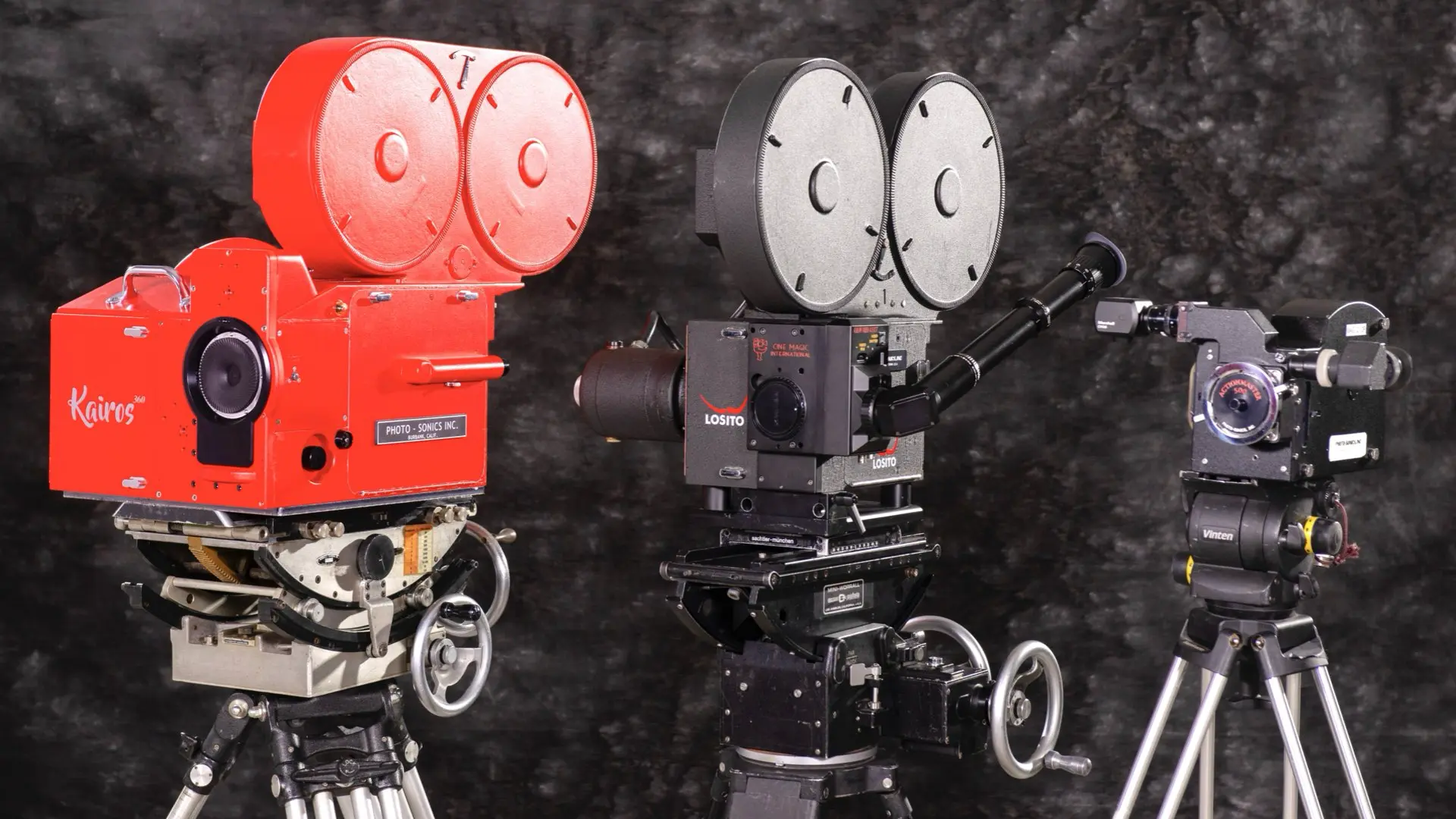

Why Analog High-Speed Cameras Now?
The most obvious question is: Why bring analog high-speed cameras to the market in 2025? For some, it’s about the aesthetic. While digital cameras have made massive strides in slow-motion capture, film still has a unique texture, especially in motion. Grain, color response, and contrast behave differently in analog. For filmmakers already committed to the film workflow — especially in large formats like 65mm — having a high-speed option that matches their principal format is useful. For others, it’s about archival integrity or production consistency. IMAX, for instance, still relies heavily on film capture in specific projects. The ability to produce slow-motion shots in the same medium avoids the need to switch to digital for those moments, maintaining visual cohesion.
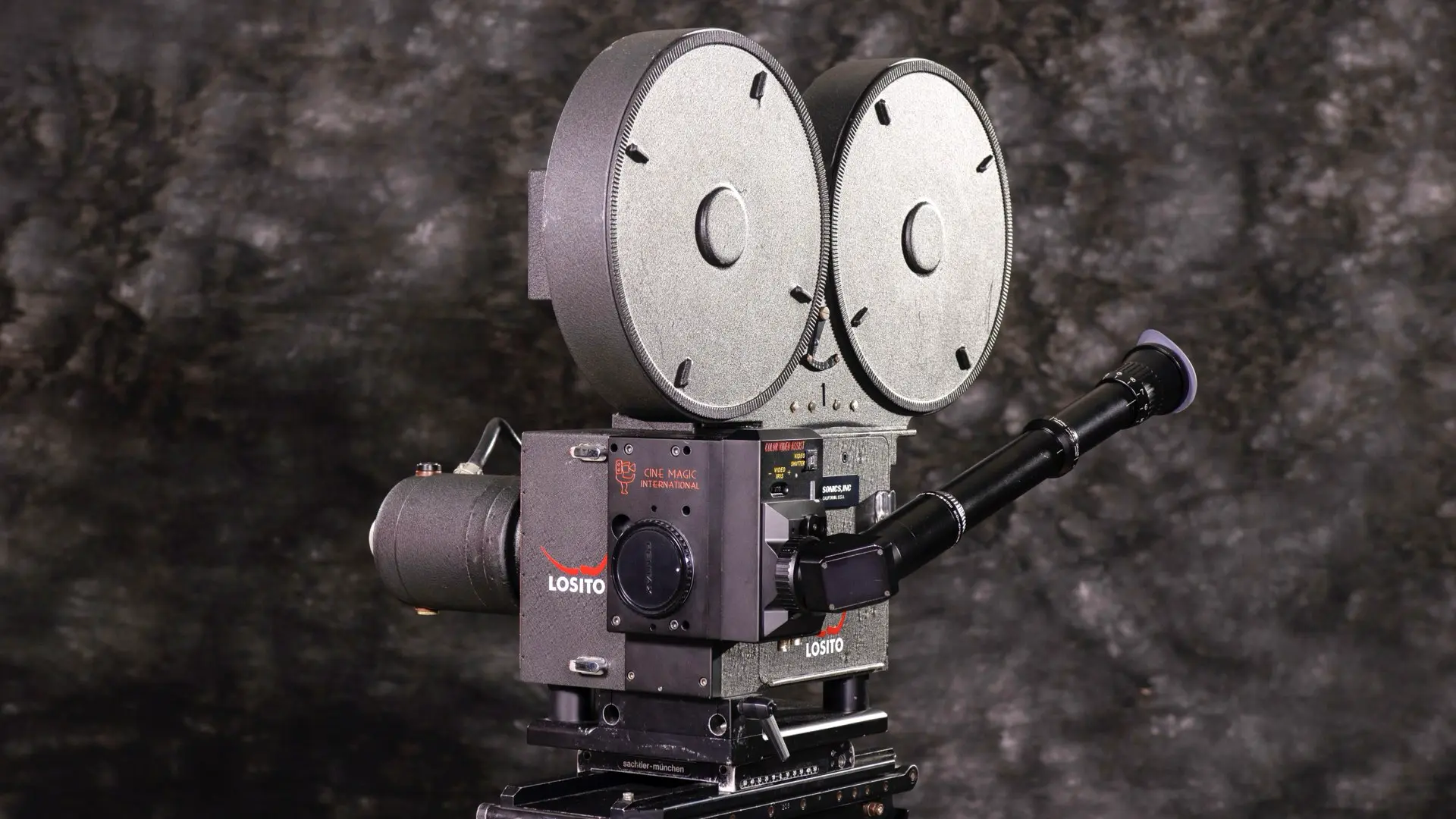
Practical Considerations
That said, these cameras are not designed for general use. They are niche tools, intended for productions with the budget, infrastructure, and creative vision to justify them. Shooting at 360 fps on 65mm burns through film stock quickly, requires massive lighting, and generates significant data (in the form of physical reels and scans). It also demands experienced crews. Still, for projects that need it — whether it’s a feature film, a high-end commercial, or a museum or large-format documentary — these cameras offer something rare: slow motion at film’s highest resolution level.
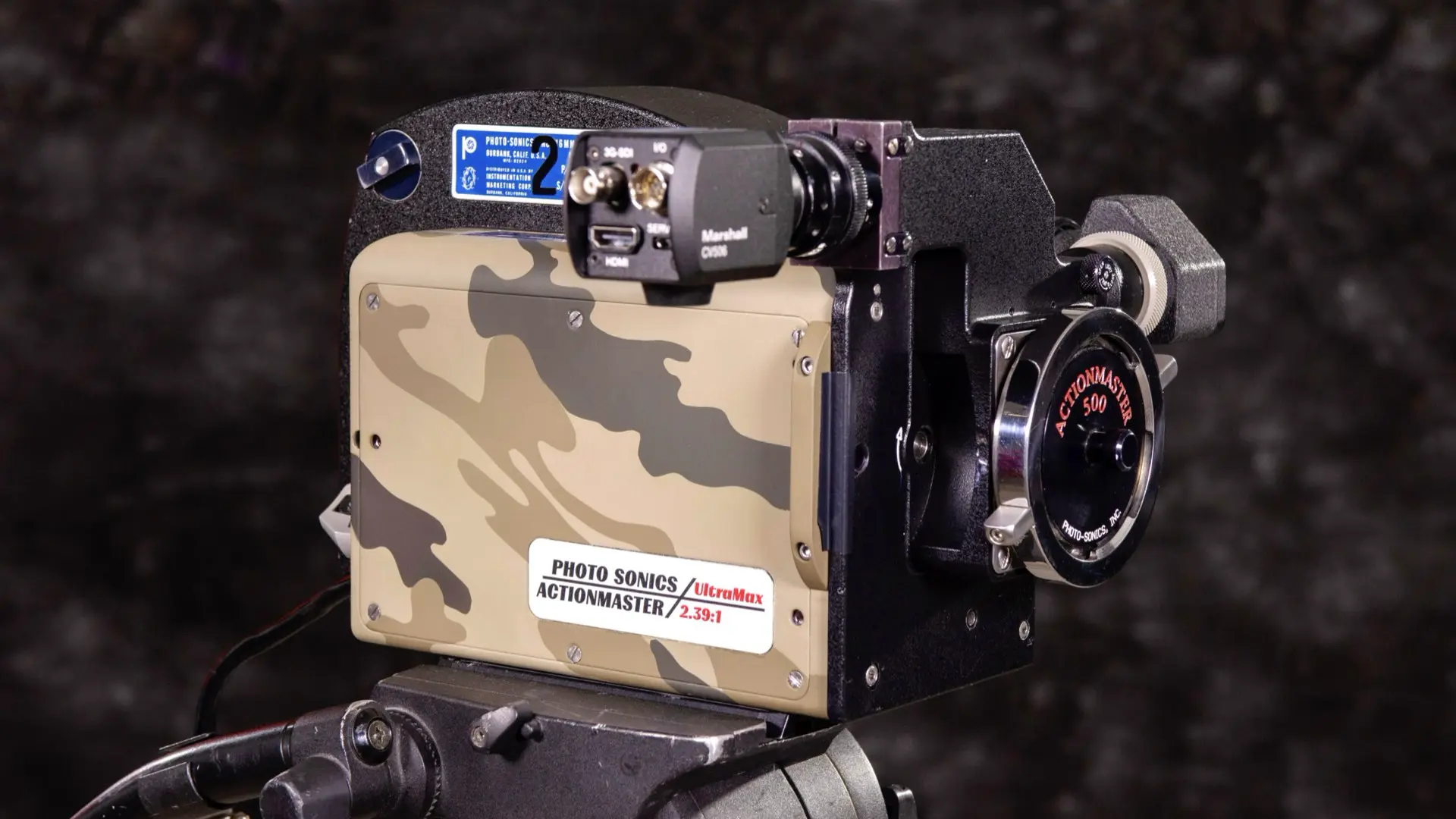
Final Thoughts
Losito’s reintroduction of high-speed analog cameras is a focused effort, not a broad challenge to the digital world. These tools are for specific users with specific goals. What they represent is not a rejection of digital, but an acknowledgment that film still has a place — even in high-speed cinematography. For productions working in 65mm or looking for a unique visual signature, Kairos and its companions provide real, workable options. And for those drawn to film’s particular qualities, this update is a reminder that innovation doesn’t always have to mean new sensors — sometimes, it means refining what already works. As of now, there’s no public information regarding the pricing of these cameras. They are available for rental exclusively through the Losito website, making them accessible primarily to high-end productions or specialized film projects. It’s also worth noting that only a limited amount of test footage has been released so far, leaving much to the imagination in terms of how these cameras perform in a full-scale production environment.
Original Source:
Meet Kairos and Kronos: 65mm Slow Motion Film Cameras



